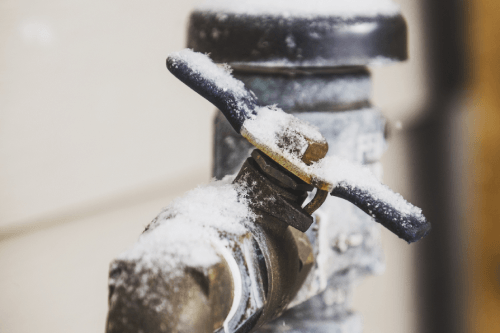Prevent Frozen Pipes in Winter: Professional Strategies
Prevent Frozen Pipes in Winter: Professional Strategies
Blog Article
We have stumbled on this article pertaining to Helpful Tips to Prevent Frozen Pipes this Winter below on the net and felt it made sense to quickly share it with you in this article.

Winter can damage your pipes, especially by freezing pipes. Right here's just how to stop it from happening and what to do if it does.
Introduction
As temperature levels decline, the risk of frozen pipelines increases, possibly causing expensive repairs and water damages. Comprehending just how to avoid icy pipes is essential for house owners in cool environments.
Avoidance Tips
Insulating prone pipelines
Wrap pipes in insulation sleeves or utilize heat tape to protect them from freezing temperature levels. Concentrate on pipes in unheated or outside locations of the home.
Home heating methods
Keep interior spaces effectively heated, especially locations with pipes. Open cupboard doors to enable warm air to flow around pipes under sinks.
Exactly how to determine icy pipelines
Look for lowered water circulation from faucets, uncommon smells or noises from pipelines, and noticeable frost on exposed pipes.
Long-Term Solutions
Structural adjustments
Take into consideration rerouting pipes far from outside walls or unheated locations. Include additional insulation to attic rooms, basements, and crawl spaces.
Updating insulation
Buy high-grade insulation for pipes, attics, and walls. Proper insulation assists keep constant temperature levels and minimizes the threat of icy pipelines.
Securing Outside Pipes
Garden hose pipes and exterior taps
Disconnect and drain yard hoses before winter months. Set up frost-proof faucets or cover outdoor faucets with insulated caps.
Recognizing Icy Pipes
What causes pipes to ice up?
Pipes ice up when exposed to temperatures listed below 32 ° F (0 ° C) for expanded durations. As water inside the pipelines freezes, it broadens, putting pressure on the pipeline walls and potentially triggering them to break.
Risks and damages
Frozen pipelines can cause supply of water interruptions, residential property damages, and costly fixings. Ruptured pipelines can flood homes and trigger considerable architectural damage.
Signs of Frozen Water Lines
Recognizing frozen pipelines early can prevent them from rupturing.
What to Do If Your Pipes Freeze
Immediate actions to take
If you presume icy pipes, keep taps available to eliminate pressure as the ice thaws. Use a hairdryer or towels soaked in warm water to thaw pipes slowly.
Conclusion
Preventing icy pipes calls for proactive actions and quick responses. By recognizing the causes, indications, and preventive measures, home owners can safeguard their plumbing throughout winter.
5 Ways to Prevent Frozen Pipes
Drain Outdoor Faucets and Disconnect Hoses
First, close the shut-off valve that controls the flow of water in the pipe to your outdoor faucet. Then, head outside to disconnect and drain your hose and open the outdoor faucet to allow the water to completely drain out of the line. Turn off the faucet when done. Finally, head back to the shut-off valve and drain the remaining water inside the pipe into a bucket or container. Additionally, if you have a home irrigation system, you should consider hiring an expert to clear the system of water each year.
Insulate Pipes
One of the best and most cost-effective methods for preventing frozen water pipes is to wrap your pipes with insulation. This is especially important for areas in your home that aren’t exposed to heat, such as an attic. We suggest using foam sleeves, which can typically be found at your local hardware store.
Keep Heat Running at 65
Your pipes are located inside your walls, and the temperature there is much colder than the rest of the house. To prevent your pipes from freezing, The Insurance Information Institute suggests that you keep your home heated to at least 65 degrees, even when traveling. You may want to invest in smart devices that can keep an eye on the temperature in your home while you’re away.
Leave Water Dripping
Moving water — even a small trickle — can prevent ice from forming inside your pipes. When freezing temps are imminent, start a drip of water from all faucets that serve exposed pipes. Leaving a few faucets running will also help relieve pressure inside the pipes and help prevent a rupture if the water inside freezes.
Open Cupboard Doors
Warm your kitchen and bathroom pipes by opening cupboards and vanities. You should also leave your interior doors ajar to help warm air circulate evenly throughout your home.

I was introduced to that write-up about 6 Ways to Prevent Frozen Pipes through a good friend on our other web property. Sharing is caring. Helping people is fun. Many thanks for taking the time to read it.
Prices & Booking Report this page